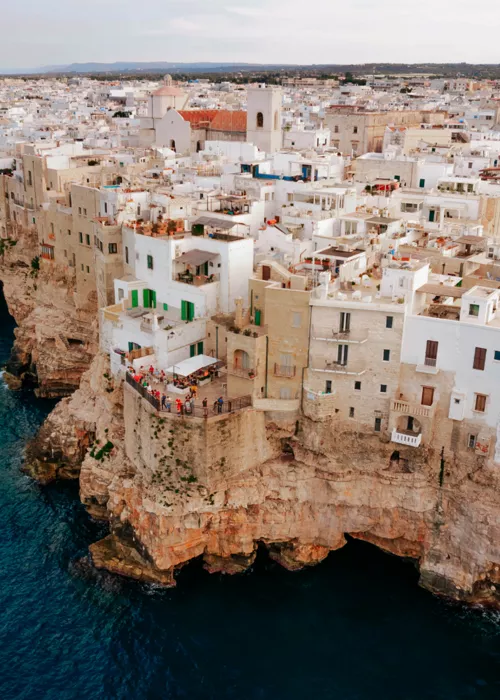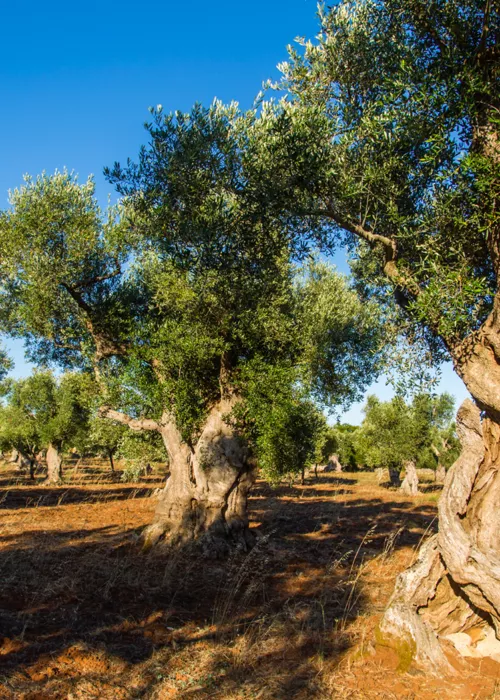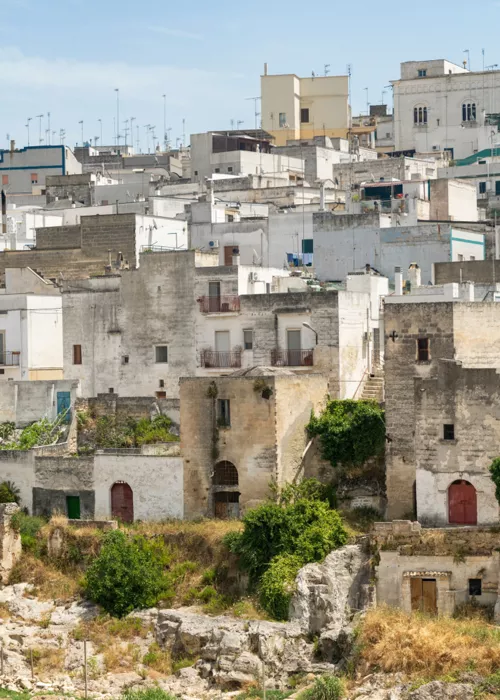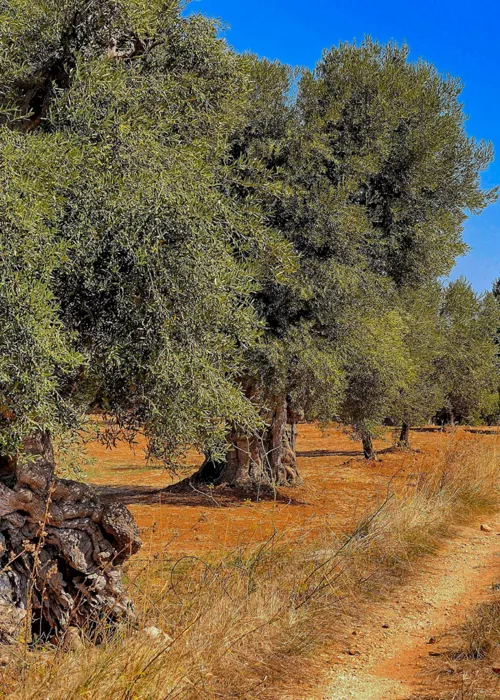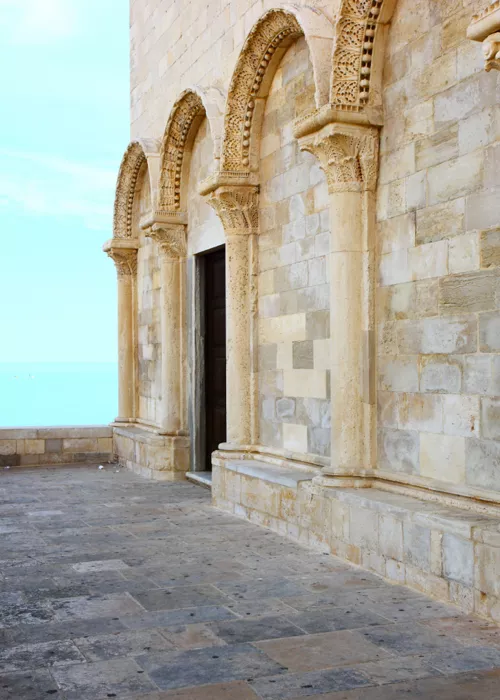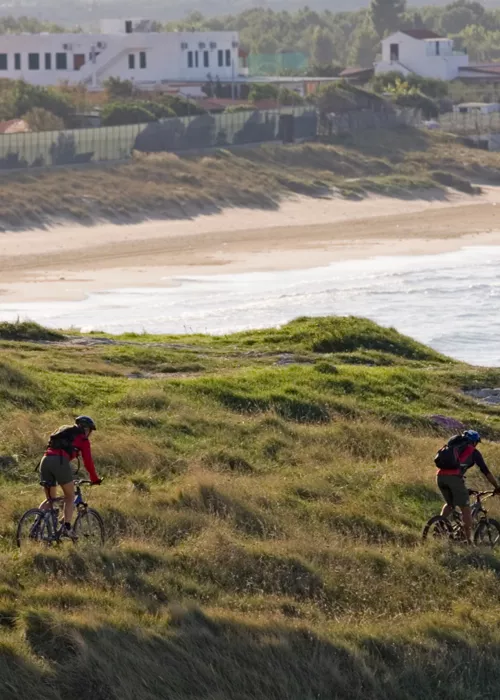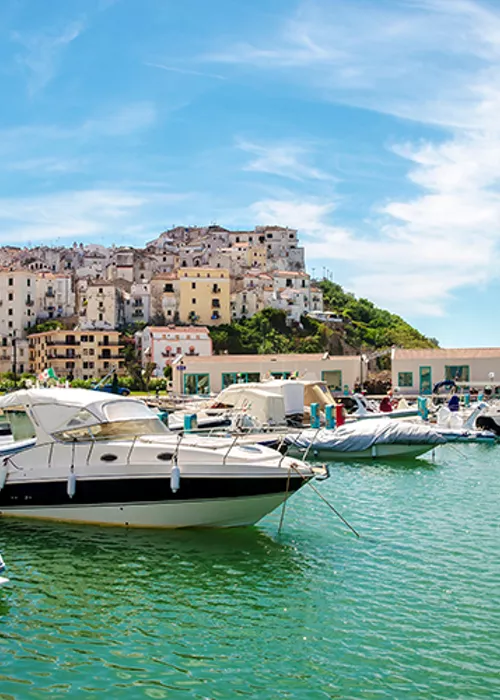From Bari to Bitetto

Along the Rotta del Levante or Eastern Route, discovering the easternmost part of Italy, you will dock at the port of Bari and set off on the Via Peuceta, to visit the most authentic south of Italy. The Via Peuceta starts from the Basilica of Saint Nicholas in Bari, a symbolic place of pilgrimage in Apulia: built between 1087, the year of the translation of the Saint's relics from Myra, and 1197, in little more than a century the Basilica became one of the most important Christian sanctuaries and one of the main pilgrimage destinations between Rome and Jerusalem. In front of the Basilica, an Angevin arch opens up into the "anthill inebriated with vitality" (Italo Calvino) of the historic centre: a labyrinth of narrow streets where a frenetic, colourful humanity lives, preserving in its faces, language and rituals the traces of the many cultural contributions of the past history of the many peoples, Eastern and Western, who have passed through over the centuries. After passing the Cathedral of San Sabino and the Norman-Swabian castle, continue along the seaside cycle path until you reach the Adriatic Bridge, from where you can admire the whole of the city. Beyond the industrial area, in a few kilometres you leave the city centre and take the old medieval road that connected Bari to Bitetto. The Middle Ages enriched the route with two jewels of rare beauty: the fortified farmhouse of Balsignano and the enchanting church of San Felice. The entrance to Bitetto is through the ancient Porta Barese, the only remaining medieval gate, among secular olive trees.
From Bitetto to Cassano delle Murge

We start from the imposing Romanesque Cathedral dedicated to St Michael the Archangel, built at the end of the 11th and the beginning of the 12th century on the model of the Basilica of St Nicholas in Bari. After about 1 km you enter the lush olive tree forest that characterises the Terra di Bari and olive trees are the symbol of Apulia: these living monuments of Mediterranean civilisation, whose origins are still preserved in some majestic specimens (millennia old), represent a priceless cultural heritage and a very important economic resource. Olive groves, almond orchards and vineyards cover the vast plains where the ancient masserie, trulli and dry-stone walls bear witness to the area's ancient agricultural vocation. This is the landscape that accompanies the tourist for the next 20 kilometres, during which there is a gradual climb towards the Murge plateau, whose rocky steps are clearly visible on the horizon during the last few kilometres of the stage, which ends in the historic centre of Cassano delle Murge.
From Cassano delle Murge to Santeramo in Colle

The stage starts from the historical centre of Cassano delle Murge and unfolds mainly within the Mesola forest. The forest has a high vegetation value due to the presence of remarkable tree specimens such as downy oak, holm oak, Aleppo pine and the typical Mediterranean scrub shrubs such as mastic, broom, sea cistus, thorny oak, strawberry tree, myrtle, hawthorn and blackthorn. Along the way, all the typical scenarios of the Murgia landscape follow one another: rocky crests, karst caves, gentle slopes, dolines and lames, wheat fields and bare pastures. A place where the action of nature mixes and coexists with the millennial action of man who has shaped and altered its forms. You can reach Santeramo in Colle through the Galietti pine forest, which takes its name from the 18th century farmhouse inside it.
From Santeramo in Colle to Altamura

Starting from the historical centre of Santeramo in Colle, through a series of districts, we slowly penetrate into the heart of the Alta Murgia National Park, one of the most important steppe areas in Italy for the presence of various floristic endemisms and one of the largest populations of steppe birds. The gramineous steppes, enriched by the presence of lichens, mosses and wild orchids, give the landscape an almost lunar appearance. Particularly widespread is a stipa commonly called ‘fairy linen’. Along the way, about 6 km from Santeramo, we come to the Grotta Sant'Angelo complex (currently being restored), one of the most important sanctuaries of ancient Apulia, second only to the great Gargano pilgrimage centre. After a short stretch along the bottom of a ravine, we climb the plateau that, starting from the rock site of Fornello (near which we walk along the ancient medieval road), slopes gently towards the Frederician town of Altamura, the stage's arrival point.
From Altamura to Gravina in Puglia

We start from the majestic Cathedral of Santa Maria Assunta, built in 1232 at the behest of Frederick II of Swabia according to the canons of Romanesque architecture of the time, and whose original layout has undergone major modifications over the centuries. We pass through the enchanting historical centre of Altamura, made up of a maze of narrow alleys and small squares known as "claustri", where the pleasant smell of bread baking in ancient stone ovens is always present: this is the famous Altamura bread, made with durum wheat semolina from Alta Murgia, famous since the Middle Ages. Beyond the town, between the Murgia and the Fossa Bradanica, the countryside stretches as far as the eye can see, with vast fields of wheat and arable land (lupins, vetches, oats). You reach Gravina in Puglia through a small wood and a paved road that leads to the gates of the town.
From Gravina in Puglia to Picciano

Starting from the Cathedral of Santa Maria Assunta, built by the Normans in 1095, which overlooks the gorge, you leave the town and cross the fascinating 18th century stone Aqueduct Bridge, which connects the two sides of the gorge and allows you to reach the Madonna della Stella plateau, from where you can enjoy a spectacular view of the town of Gravina in Puglia and its rocky habitat. A cobbled road leads to the Botromagno hill, the site of the first human settlement in the Gravina area, dating back to the Neolithic period; later Sidion, one of the most important towns in Peucezia, was built on this hill, of which many archaeological remains have unfortunately been completely abandoned. The descent from the Botromagno hill offers one of the most evocative views of the Alta Murgia; after a few kilometres a new but gentle climb begins towards the hill on which the Bosco Difesa Grande extends, one of the largest and richest wooded complexes in the whole of Apulia. The trail crosses the entire forest along paths that lead for about 10km to the Fossa Bradanica, a vast landscape of rolling hills characterised by deep, clayey alluvial soils. You will cross large expanses of intensively cultivated fields, which turn bright yellow in May and June, and then begin the final climb up the hill of Picciano, where stands the Benedictine Sanctuary, main destination of this stage.
From Picciano to Matera

We start from the Benedictine Sanctuary of Picciano, from where we begin a slow descent towards the great tuff plain where Matera stands. The extraordinary beauty and uniqueness of the rocky habitat slowly reveals itself to the traveller's eyes: the cliffs and caves on whose walls man has left traces of his continuous presence from prehistory to the present day are slowly discovered. The route passes through the San Giuliano nature reserve, one of the most important wetlands in Basilicata. The entrance to Matera is from Rione Casalnuovo, from where you can reach the enchanting Sassi area. The Cammino ends at the Cathedral of the Madonna della Bruna.






